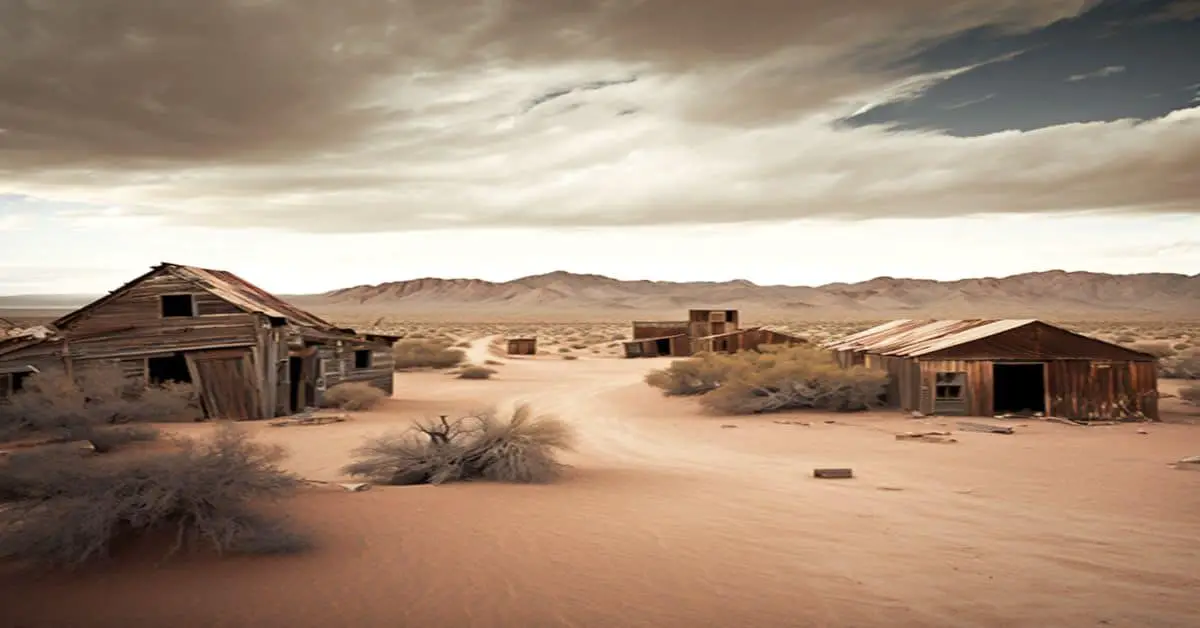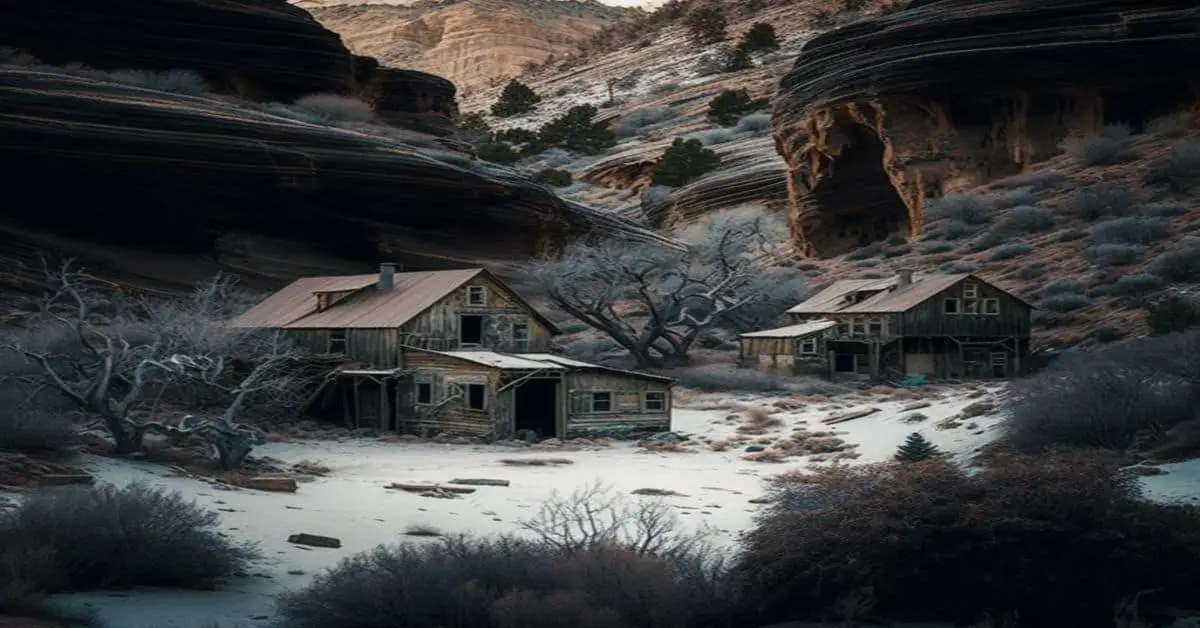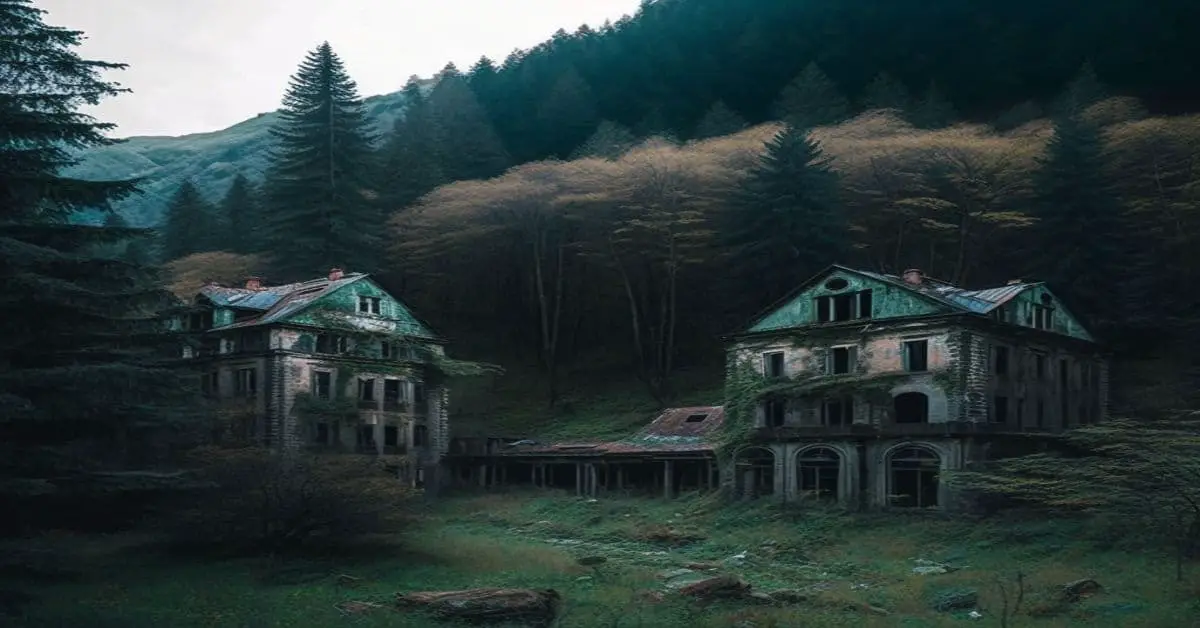Nestled in the Inyo Mountains of California, Cerro Gordo stands as a testament to the state’s rich mining history. Discovered in 1865 by Mexican prospectors, the town grew rapidly under the leadership of engineer Mortimer Belshaw, becoming the greatest silver and lead producer in California’s history.
Although the town has long since been abandoned, visitors can still experience its intact structures and learn about the lives of the miners who once called Cerro Gordo home.
Located in Inyo County, Cerro Gordo is accessible via a steep and winding dirt road from Keeler. Despite its remote location, the town remains a popular attraction for history buffs and adventurers alike.
Visitors can explore the town’s original buildings, including a hotel, livery stable, bunkhouse, general store, and mine office. They can also tour the town’s famous charcoal kilns, which were built in 1876 and still stand as a testament to the town’s mining heritage.
With its unique blend of history and natural beauty, Cerro Gordo remains a must-visit destination for anyone interested in California’s past.
Key Takeaways
- Cerro Gordo is a ghost town in Inyo County, California that was discovered by Mexican prospectors in 1865.
- It was once the greatest producer of silver and lead in California’s history, and was led by engineer Mortimer Belshaw.
- Visitors can tour the town’s original buildings, including a hotel, livery stable, bunkhouse, general store, and mine office, as well as the famous charcoal kilns built in 1876.
- Cerro Gordo is accessible via a steep and winding dirt road from Keeler, and offers hiking trails and well-preserved buildings for visitors to explore, as well as a reputation for paranormal activity and ghost sightings.
History and Discovery
Cerro Gordo, a ghost town located in Inyo County, California, was first discovered in 1865 by Mexican prospectors. The discovery of silver ore by a Mexican miner ignited the interest of mining people in Virginia City, leading to the takeover of a lead-producing mine by engineer Mortimer Belshaw.
Under his leadership, Cerro Gordo became the greatest silver and lead producer in California history, reaching its peak in the late 1870s. Mexican prospectors played a significant role in the discovery of Cerro Gordo’s rich silver and lead deposits. After the initial discovery, the news spread quickly, and a rush of prospectors arrived in the area, leading to the development of the town.
Mortimer Belshaw’s leadership, however, was crucial to the town’s success and its eventual status as a major mining center. His innovative mining techniques and business strategies helped Cerro Gordo remain profitable even during difficult times, solidifying its place in California’s mining history.
Location and Access
Located in the Inyo Range, visitors can reach the historic mining town of Cerro Gordo by traveling 8 miles along a steep and winding dirt road from Keeler. It is recommended to use a 4WD vehicle for the journey.
The scenic drive offers breathtaking views of the surrounding mountains and valleys, making the trip worthwhile even before arriving at the ghost town.
In addition to the scenic drive, visitors can also explore the area through hiking trails. The town is situated at an elevation of 9,000 feet, providing ample opportunities to hike and explore the surrounding terrain.
Whether visitors are interested in hiking to old mine sites or just enjoying the natural beauty of the area, Cerro Gordo offers a unique and memorable experience.
Attractions and Features
The historic mining town of Cerro Gordo offers an array of attractions and features for visitors to explore and admire. One of the most popular activities is exploring the ruins of the town’s buildings, which have been well-preserved and offer a glimpse into the past.
Visitors can wander through the hotel, livery stable, mine office, and general store, imagining what life was like for the miners who once worked and lived in this remote location. The bunkhouse and mine are also open for exploration, providing a deeper understanding of the daily routines and challenges faced by the residents of Cerro Gordo.
In addition to the tangible remnants of the past, Cerro Gordo is also known for its paranormal activity. Many visitors report strange occurrences and unexplained phenomena, adding to the town’s mystique and allure. The charcoal kilns, built in 1876 for smelting silver and lead, are particularly known for their eerie atmosphere and ghostly sightings.
While some may be skeptical of the paranormal claims, there is no denying the unique energy and atmosphere that permeates Cerro Gordo, making it a fascinating destination for those interested in history, mining, and the unexplained.
“The ghost town of Cerro Gordo was purchased for 1.4 million dollars in June 2018 with the intent to turn it into a tourist attraction, accessed by special permission. At that time, it had several vintage buildings, including the general store and 336 acres (136 ha). The buyers, Brent Underwood and Jon Bier, purchased the property with additional Los Angeles-based investors. The American Hotel, an icehouse, and a residence were destroyed in a suspected electrical fire on June 15, 2020. Despite these challenges, in 2021 Underwood said he was still committed to the project.”
https://en.wikipedia.org/wiki/Cerro_Gordo,_California
Frequently Asked Questions
What is the current condition of the mining equipment and machinery at Cerro Gordo?
The current condition of the mining equipment and machinery at Cerro Gordo is not specified. However, restoration plans are underway to preserve the historical significance of intact structures including a hotel, livery stable, mine, general store, and mine office.
Has any paranormal activity been reported at Cerro Gordo?
Paranormal rumors and local legends surround Cerro Gordo’s supernatural history, but no scientific investigations of unexplained phenomena have been conducted. The focus remains on the town’s historical significance and intact structures.
What is the population of Keeler, the nearest town to Cerro Gordo?
The population of Keeler, Cerro Gordo’s nearest town, is not readily available. The current condition of mining equipment and machinery at Cerro Gordo is unknown. Paranormal activity has been reported, and guided tours are available. The closure of Owens Lake has negatively impacted the surrounding environment and wildlife. The historical significance of Cerro Gordo’s role as the greatest silver and lead producer in California’s history is noteworthy.
Are there any guided tours available at Cerro Gordo?
Guided tours are available at Cerro Gordo, offering visitors a chance to explore the historical significance of the town. These tours provide in-depth information about the intact structures, bunkhouse, mine, and other original buildings.
How has the closure of Owens Lake affected the surrounding environment and wildlife?
The closure of Owens Lake in 1927 due to water diversion has resulted in significant environmental impact and loss of wildlife. The dry lake bed has caused increased air pollution, habitat destruction, and loss of water resources, impacting wildlife conservation efforts in the surrounding area.


